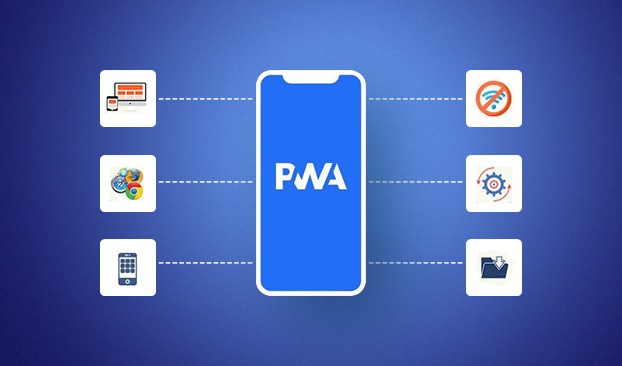Level up your business with US.
- Home
- Why Progressive Web Apps (PWAs) Are Transforming the Mobile App Landscape
Why Progressive Web Apps (PWAs) Are Transforming the Mobile App Landscape
September 5, 2025 - Blog
Why Progressive Web Apps (PWAs) Are Transforming the Mobile App Landscape
The mobile app landscape is evolving rapidly. In 2025, users demand speed, convenience, and seamless experiences across devices. While native apps have long dominated the market, Progressive Web Apps (PWAs) are emerging as a transformative force. They combine the best of mobile apps and websites, delivering fast, reliable, and engaging experiences without the friction of app store downloads.
As more businesses recognize the potential of PWAs, their adoption is reshaping how companies build, test, and deploy mobile solutions. In this blog, we’ll explore why PWAs are revolutionizing the mobile app landscape and how code-driven labs play a pivotal role in ensuring these apps meet performance, security, and scalability expectations.

What Are Progressive Web Apps (PWAs)?
Progressive Web Apps are web applications enhanced with modern web technologies that provide app-like features such as offline access, push notifications, and home-screen installation. Unlike native apps, PWAs don’t require users to download them from app stores; instead, they run directly in web browsers while delivering mobile-first experiences.
Key features of PWAs include:
-
Offline Functionality: Thanks to service workers, PWAs function even without an internet connection.
-
App-Like Feel: PWAs mimic the experience of native apps, with smooth navigation and interactions.
-
Cross-Platform Compatibility: A single PWA works seamlessly across mobile devices, desktops, and tablets.
-
Lightweight: PWAs consume less storage compared to bulky native apps.
-
Fast Load Times: Optimized for speed, PWAs deliver near-instant load experiences.
Why PWAs Are Transforming the Mobile App Landscape
1. Eliminating App Store Barriers
One of the biggest frustrations for users and businesses alike is the dependency on app stores. With PWAs, users simply access the app via a URL and can “install” it directly on their device. This eliminates download friction, boosts accessibility, and reduces user drop-offs.
2. Faster Development and Lower Costs
Building separate native apps for iOS and Android often doubles development costs and time. PWAs require only one codebase that runs across platforms, making development faster and more cost-effective.
3. Superior Performance
PWAs leverage caching and service workers to ensure smooth performance, even on low network bandwidth. Faster load times result in higher engagement and reduced bounce rates.
4. Increased Reach and Accessibility
Since PWAs are built for the web, they are universally accessible across devices and operating systems. Businesses can tap into a wider audience without worrying about app store restrictions or compatibility.
5. Offline Availability
For industries like travel, retail, and education, offline availability is a game changer. PWAs allow users to browse content, check orders, or view saved materials without an active internet connection.
6. Improved User Engagement
With features like push notifications, full-screen functionality, and home-screen installation, PWAs encourage regular user interaction and engagement similar to native apps.
7. SEO Benefits
Unlike native apps, PWAs are discoverable via search engines. This makes them more accessible to users searching online, giving businesses a visibility edge.
Real-World Examples of PWAs in Action
-
Twitter Lite: Twitter’s PWA reduced data usage by 70% and increased engagement by over 60%.
-
Starbucks: Their PWA enables customers to browse menus and customize orders offline, boosting reach in low-connectivity regions.
-
Uber: Uber’s PWA loads in under 3 seconds even on 2G networks, proving the efficiency of lightweight design.
-
Forbes: The Forbes PWA delivers faster load times, leading to a 43% increase in sessions per user.
These examples highlight how PWAs are transforming user experiences while driving measurable business outcomes.
Industry-Wide Impact of PWAs
Retail
Retailers leverage PWAs to deliver faster product browsing, offline catalogs, and push notifications for promotions, reducing cart abandonment rates.
Travel and Hospitality
Airlines, hotels, and booking platforms use PWAs for easy ticket access, itinerary updates, and offline boarding passes.
Education
PWAs enable access to learning materials in areas with poor connectivity, making them invaluable for e-learning platforms.
Finance
Banks and fintech apps adopt PWAs to provide lightweight, secure, and accessible platforms for mobile transactions.
Media and Entertainment
Streaming platforms and news outlets are embracing PWAs for quick content delivery and higher user retention.
Challenges in Building PWAs
Despite their benefits, building high-performing PWAs comes with challenges:
-
Device Compatibility: Not all browsers support every PWA feature equally.
-
Performance Optimization: Ensuring smooth functionality on low-end devices requires advanced testing.
-
Security Risks: PWAs rely on HTTPS and service workers, making strong security practices essential.
-
User Adoption: Some users are unfamiliar with PWAs and may not understand how to “install” them.
-
Integration Complexities: Features like payments, offline sync, and push notifications require precise implementation.
This is where code-driven labs provide the much-needed infrastructure to ensure PWAs deliver reliable and scalable experiences.
How Code-Driven Labs Support PWAs
PWAs require thorough testing and validation to meet modern user expectations. Code-driven labs offer the environments and frameworks to address the challenges above effectively.
1. Cross-Browser and Cross-Device Testing
Since PWAs rely heavily on browser capabilities, labs simulate various devices, operating systems, and browsers to ensure consistent performance across platforms.
2. Performance Testing
Labs use automated tools to test page speed, caching efficiency, and responsiveness. This ensures PWAs meet the performance standards users expect, even in low connectivity environments.
3. Offline Simulation
Code-driven labs replicate offline conditions, validating whether PWAs can truly deliver seamless experiences without an internet connection.
4. Security Validation
Labs test HTTPS protocols, data encryption, and service worker implementations to identify vulnerabilities. This ensures PWAs meet privacy regulations and build user trust.
5. Continuous Integration and Deployment (CI/CD)
With CI/CD pipelines, labs allow developers to continuously update and deploy new features without disrupting the user experience. This accelerates innovation while maintaining app quality.
6. Load and Stress Testing
As PWAs must handle heavy traffic, labs simulate high-load environments to ensure scalability and prevent crashes during peak usage.
7. Usability Testing
Code-driven labs validate how intuitive the app feels across user segments. They test UI/UX design, installation flows, and push notification functionality to maximize user adoption.
The Business Benefits of PWAs with Code-Driven Labs
When combined with robust testing from code-driven labs, PWAs can help businesses achieve:
-
Higher User Retention: Faster and smoother experiences keep users engaged.
-
Reduced Development Costs: Single codebases lower expenses while ensuring scalability.
-
Faster Market Entry: Streamlined testing pipelines speed up launches.
-
Stronger Security: Rigorous validation protects against vulnerabilities.
-
Global Reach: Compatibility and offline access extend market opportunities worldwide.
The Future of PWAs in 2025 and Beyond
PWAs are poised to dominate mobile experiences in the years ahead. Trends shaping their future include:
-
5G and Edge Computing: Faster connectivity will enable even more sophisticated PWAs.
-
Integration with AI: AI-powered recommendations and personalization will enhance PWA usability.
-
Wearable and IoT Expansion: PWAs will extend beyond phones into smart devices.
-
Enterprise Adoption: Businesses will adopt PWAs to replace costly internal apps.
The shift toward lightweight, universal, and accessible solutions ensures PWAs will remain at the forefront of mobile app innovation.
Conclusion
Progressive Web Apps are transforming the mobile app landscape by combining the reach of the web with the engagement of native apps. They are faster, cost-effective, and accessible, making them a powerful solution for businesses across industries.
Yet, to fully leverage PWAs, organizations must address challenges like cross-device compatibility, performance optimization, and security. Code-driven labs provide the infrastructure to overcome these challenges, offering automated testing, offline simulations, and scalable pipelines that ensure PWAs deliver seamless, secure, and engaging experiences.
As businesses step into 2025 and beyond, those that integrate PWA innovation with the rigor of code-driven labs will not only keep pace with user expectations but also lead the transformation of the mobile app ecosystem.
